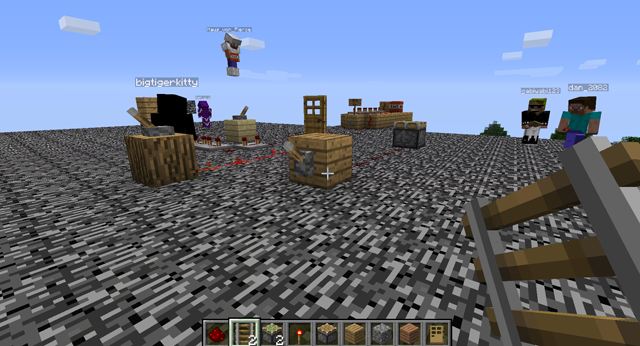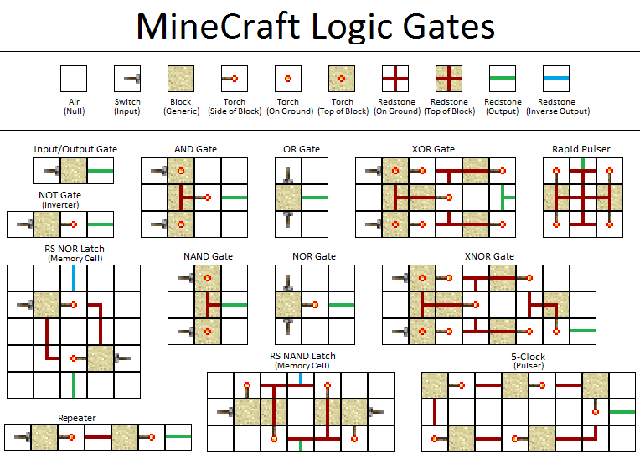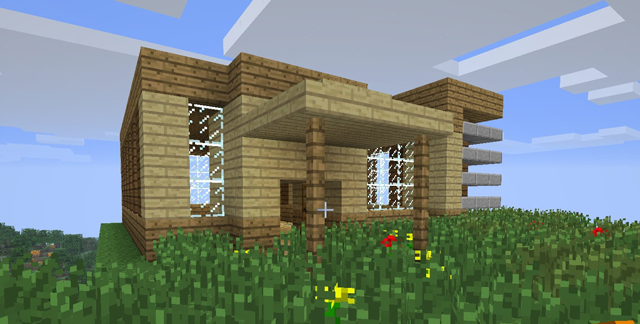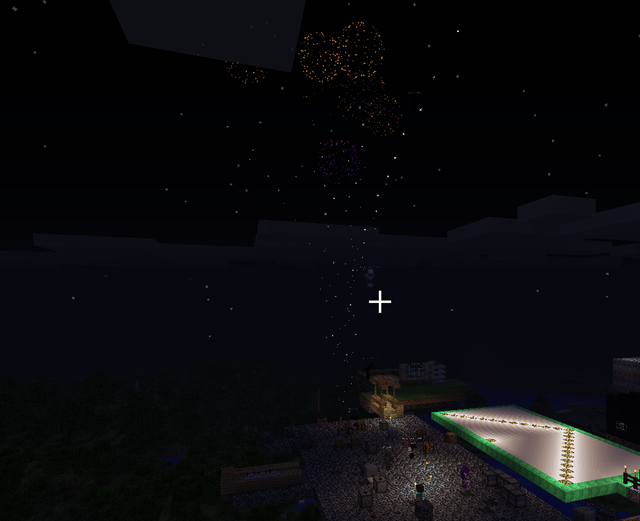Red Stone Circuit Workshop
May 17, 2013
PROJECTS: Leveling Up
PRINCIPLES: Interest-powered, Peer-supported, Production centered, Shared purpose
TAGS:

http://i.imgur.com/xevDXT5.png
While many may not associate the screenshot above with an electronic engineering workshop, the players in the pictured Minecraft game above are actually engaged in an impromptu circuitry workshop. This is thanks to the game’s robust and intricate ‘red stone circuit’ (link) system, which emulates the capabilities of real world circuit systems.

http://cdn.overclock.net/2/26/2626590b_minecraft-redstone-logic-gates.png
Minecraft is a game which revolves around players exploring and building in a world made of blocks. Players experience a first-person point of view in which they control one character capable of placing and destroying blocks in the world, one block at a time. Players are able to build and play together in multiplayer virtual worlds, making elaborate structures and cities. The game’s red stone circuit system combines both real world circuit logic and the game’s fantasy adventure setting to create a system that emulates electricity and circuitry in the game.

A house structure built within a Minecraft world

An elaborate ‘city in the sky’ built by a team of players
Similar to our StarCraft coaching study, we hosted hangouts online in order to learn more about how community members teach one another about the game among groups and online resources.
My colleague Tara Brown and I began hosting and participating in these Minecraft hangouts as the game provides an ideal intersection between gaming and making. Our open call to our current coaching/mentorship community led us to recruit Minecraft players, including kids and their parents who wanted to know more about the game. Our group was tasked with building a city in the sky in Minecraft together in a persistent multiplayer world, which was meant to give the team smaller directed goals during each hangout (build the foundation, build the houses, lay the transportation infrastructure, etc).
It was during our third hangout that one of our younger experts, Gary, age 12, made a red stone circuit demo that attracted the rest of our player group to explore the circuit system. By showcasing the functions of a red stone repeater, Gary sparked an cascade of interest among the player group as everyone began trying to build and experiment with their own red stone demos. Among the buildings within the player created city, the group set aside an empty lot for the purpose of experimenting and learning about red stone circuits, which then could be applied to the city structures Each player established their own self-directed goals in order to make their vision of their projects a reality, and our Minecraft experts were constantly assisting others in getting their demo up and running. Experts would take more of an ‘over the shoulder’ role in support of players learning new aspects about the game.
Although our hangout was learning the very basics of Minecraft circuits, the broader Minecraft community has created impressive structures that redefine what is possible with the red stone circuit system. For example, one player created an impressive structure which emulated the functions of a 16-bit computer using computational principles grounded in academically relevant knowledge and theories.
Even though not every player is dedicated to building giant computational structures from red stone circuits, players still must master the basics of the game’s circuit logic. During their play sessions, players often encounter and manipulate red stone circuits as part of the everyday Minecraft experience. The game provides the opportunity for players to utilize their interest in Minecraft to learn more about a circuit system that can be nearly directly applied to circuit logic in the physical world.
The red stone circuit system is an example of an academically oriented activity in context of an interest-driven game experience. Players must master the basics of real world circuit logic in order to be proficient with the game’s red stone circuit logic system. Thus, players are capable of applying what they know about the game’s red stone circuit system to become proficient in the basics in real world circuit logic and problem solving.
These collaborative creative gameplay sessions take place in a shared Minecraft world, in which players contribute to building a collective city, structure, or other unique projects. The online space becomes a communal world in which players can unify their projects under a shared purpose. Finding a team to begin an elaborate project, or learning more about the elements of the game through another player, embody a peer supported environment in which connecting with other players is crucial for a world’s community.
Furthermore, what players create are regularly shared with the community in the production centered Minecraft community. The popular maker website DIY.org even has a popular category for Minecraft projects for players to show off their creations and be inspired by other works. Doing a simple search for Minecraft on YouTube will also display a plethora of Minecraft videos in which players are showcasing both their creations, tutorials, and gameplay sessions.
As our Minecraft hangout and impromptu crash course on circuit logic was nearing an end, the interest shifted to using the functions of dispenser blocks and red stones circuits to shoot rockets in the air and produce fireworks. Gary was kind enough to treat everyone to a lively Minecraft fireworks display in celebration for what everyone learned during our play session, and also showcase there was a lot more to pick up about red stone circuits. Learning to make elaborate firework shows, however, would be reserved for our next hangout.

http://i.imgur.com/bY9Nt6V.pnghttp://i.imgur.com/bY9Nt6V.png

-93x100.jpg)
